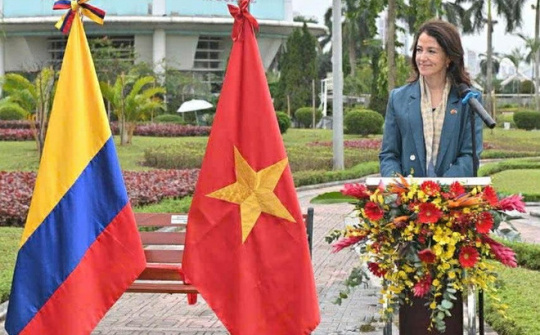VIM - Many countries throughout the world are increasingly warming to the new green trend and showing interest in it. In addition to the sun and wind, many countries have effectively implemented the concept of converting waste into positive energy in conjunction with appropriate policies to reduce pollution.
COP26 finally reached an agreement to "gradually reduce coal and inefficient fossil fuel subsidies to limit global temperature rise to 1.5 degrees Celsius to avoid severe impacts of climate change."
The leader of a prestigious multi-industry corporation in the South said, "With the advancement of science and technology, burning garbage into electricity, in addition to renewable energy, is now a viable option for helping to clean up the environment."
Grow in an environmentally friendly manner
In addition to the sun and wind, many countries have effectively implemented the concept of converting waste into positive energy in conjunction with appropriate policies to reduce pollution.

Garbage is also a valuable resource if you know how to recycle. Photo: AFP/VNA
In the face of millions of tons of rubbish piling up every year that isn't properly processed, particularly plastic waste that harms the environment, scientists have discovered that waste may be a useful resource if you know how to recycle it. As a result, some governments see this as a future alternative energy source.
For example, the United Arab Emirates, one of the world's largest oil exporters, is constructing the Sharjah Plants, the Gulf's first waste-to-energy. These one-of-a-kind structures will eliminate the chronic trash backlog and minimize reliance on electricity.
Engineer Nouf Wazir of Bee'ah, a waste management company, stated, "Not everyone understands the value of waste. Sharjah plants are slated to start up this year, with the potential to burn more than 300,000 tons of garbage per year, enough to power 28,000 homes."
In Dubai, a similar factory is under development. According to Hitachi Zosen Inova, one of the partner companies of this project, after completion as planned in 2024, this will be one of the world's largest waste-to-energy plants.

Waste-to-energy incineration
Scientists at the University of Chester (UK) came up with the world's first method for converting plastic trash into power and environmentally beneficial hydrogen fuel two years ago. This effective conversion system was then used to clean up waste plastic in China, India, Japan, Korea, and Southeast Asia.
The Copenhill power plant was inaugurated in Copenhagen, Denmark's capital. Instead of employing fossil fuels, raw materials are a waste. Furthermore, Copenhagen intends to build a CO2 storage system or discover commercial uses for the gas.
Tokyo (Japan) is the world's most successful city in terms of garbage treatment, with only 1% of waste being discharged into the environment.
China is also constructing a facility in Shenzhen, a 20-million-person megacity, to burn a third of the city's 15,000 tons of garbage each day and convert it to electricity.
Power planning VIII requires a new approach.
Among the 20 countries with the largest amount of waste and higher than the world average when each year, Vietnam generates about 1.8 million tons of plastic waste. According to statistics of the Vietnam Plastics Association, plastic garbage accounts for around 8% to 12% of residential solid waste in our country, but only about 11% to 12% of that material is treated and recycled. The rest is buried, burned, or disposed of in an indiscriminate manner. This can result in environmental disasters, particularly contamination of the oceans.

Plastic waste encroaching on the marine environment
In addition to solar and wind power, "waste-to-energy incineration" is becoming more popular around the world, but it is still uncommon in Vietnam, and it is even absent from the Power Plan VIII.

View of COP26

The vast solar power plant at the foot of Cam Mountain

The painting titled "Blue Sunflowers" on That Son mountain range
The CEO also said, "I'm not sure why Power Plan VIII is so reliant on coal, despite the fact that imported fossil fuels are prohibitively expensive due to shortage. Furthermore, thermal power financing is depleted because the EU does not approve aid for fossil fuel projects, notwithstanding Power Plan VIII's continued approval of the construction of 27 additional sky-burning furnaces. Borrowing foreign dollars to construct and import coal is a voluntarism behavior. While God's gifts of sun and wind are squandered. It is not difficult to develop clean electricity; the government only needs to implement sound policies, and investors will gladly spend additional money to do so. Energy development in Vietnam must be in line with the global trend, taking advantage of the country's precious resources without spending money to buy them."./.
By Lap Nguyen





